Finding it too difficult to secure pet-friendly accommodation, many pet owners are left with no choice but to give up their four-legged friends - a truly heart-breaking outcome. Recently, new government plans were announced to make it easier for tenants to keep pets. As part of the proposals, landlords will no longer be able to issue a blanket ban on pets, and all tenants will have the legal right to request a pet in their property. The landlord must consider this request and cannot unreasonably deny it, with the tenant able to challenge their decision. These planned changes will help to improve the well-being of tenants and make their houses feel more like home, thanks to the loving company of their furry friends.
So, with the number of pets living in rental properties possibly set to increase soon, it’s essential that tenants are well prepared. With any pet, there’s the paw-tential for things within the home to be damaged - here are some of our top tips for being a responsible tenant and keeping your rental property in tip-top condition.
Chewing and scratching
Toys and games
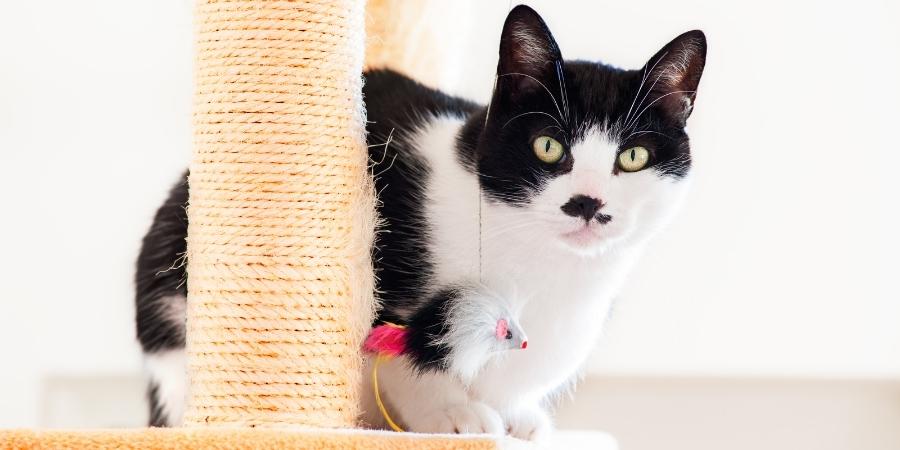
While it’s instinctive, natural behaviour for our cheeky pets to scratch and chew on random objects, it’s certainly not ideal - especially when you live in a rented property and will be responsible for the repairs. Our pets need the opportunity to show these behaviours so it’s important they can do so using safe toys and chew treats.
Unwanted chewing and scratching can also result from boredom, so it’s important your four-legged friend is well exercised and has plenty of fun toys to play with. For feline friends that love using their claws, a sturdy scratching post is great for keeping them entertained and maintaining their nails, whilst interactive puzzle toys that dispense treats are fantastic for both cats and dogs. Have enough toys to switch them out at regular intervals so your pet doesn’t get bored playing with the same few. Don’t forget that indoor rabbits will also need opportunities to play and dig.
Shop our range of vet-approved pet toys.
Separation anxiety
Chewing is natural for dogs; however, destructive behaviour like this can be a sign of separation anxiety. Dogs are social animals and may become distressed if they’re away from their owner or left alone. Teaching independence to puppies will help reduce the likelihood of developing this problem. If you think your adult dog suffers from separation anxiety, you should speak to your vet or an accredited behaviourist for advice.
While each dog’s ability to cope is different, no dog should be left alone for longer than four hours. If you know you will be away from home for several hours, ask a friend or trusted neighbour to pop in or use professional dog walking or pet sitting services.
Anti-chew sprays
For extra protection against those pesky bite marks, you could apply a safe chew-repellent spray to your doors, furniture, carpets, skirting boards, curtains (and anything else your furry friend may take an interest in!). Made from natural deterrents, these sprays have a bitter taste that can be off-putting to your pet and discourage them from chewing. However, anti-chew sprays are a temporary solution and you need to redirect your pets to chew the right things instead, such as their toys.
Stains
Think ahead and be prepared
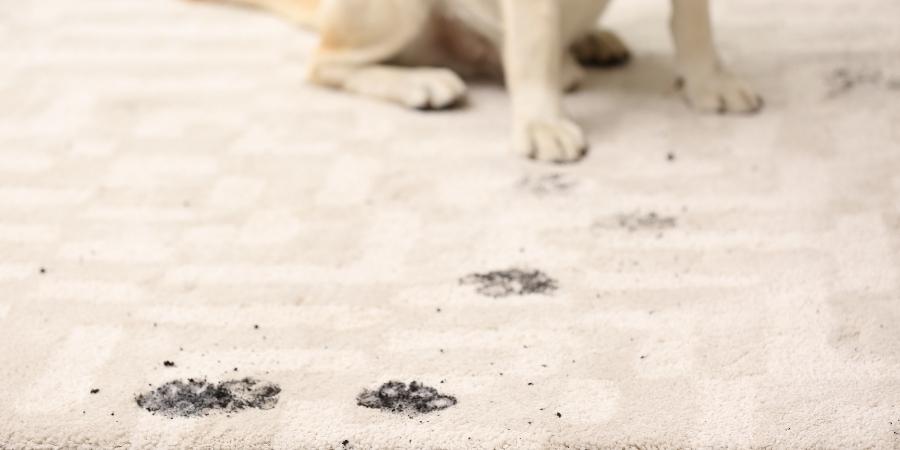
If your dog loves nothing more than getting their paws filthy playing in the garden or whilst out on a muddy walk, it’s a good idea to have plenty of towels stored close to the doorway so you can clean them up before they enter. If they’re damp, try to keep them in an area with a floor that’s easier to clean, such as hard tiles or vinyl, until they’re dry - this will also help to limit unpleasant pet smells spreading within your home.
React quickly to spillages
Every pet owner knows that our furry friends can make a mess. From muddy paws after a long, rainy walk to those unexpected toilet accidents, it’s no surprise that the carpets, rugs, and soft furnishings within the home are prone to staining.
To prevent any permanent stains, clean up any wet spots immediately - the longer a liquid is left to absorb into the carpet, the harder it will be to remove! When cleaning up any toilet mishaps, be sure to soak up as much liquid as possible to get rid of bacteria and unpleasant smells. Once the surface is mostly dry to the touch, go in with a pet-friendly stain remover and repeat the process if necessary. To prevent your pet from urinating in the same spot, it’s a good idea to use a non-scented stain remover as scented ones can encourage marking.
To limit the chances of any toilet accidents, cats need plenty of litter trays located throughout the house that are emptied and cleaned regularly. If your cat or kitten isn’t yet house trained or has trouble using the litter tray, look at our top tips for litter training.
Pet hair
Regular grooming
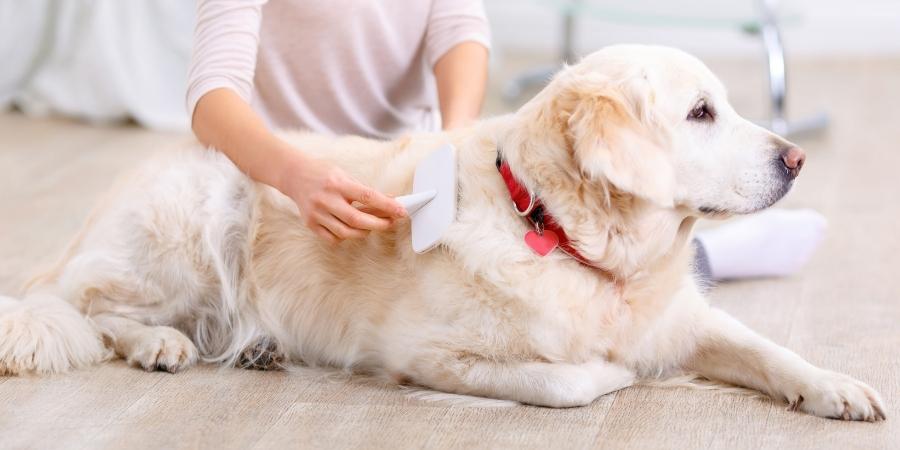
Whilst pet shedding is completely normal, it can also be super frustrating - especially when it feels almost impossible to keep your home fur-free. One of the best ways to limit pet hair is to prioritise your pet’s grooming. Regardless of their species or breed, regular grooming should be part of your pet’s routine, and doing so can keep you on top of pet hair. Removing large quantities of hair at once will help speed up the shedding process and reduce the build-up of pet hair in your home, but you may need to get your pet used to being brushed gradually first.
Read our expert advice on grooming your pet safely and which tools to use depending on species.
Layer up
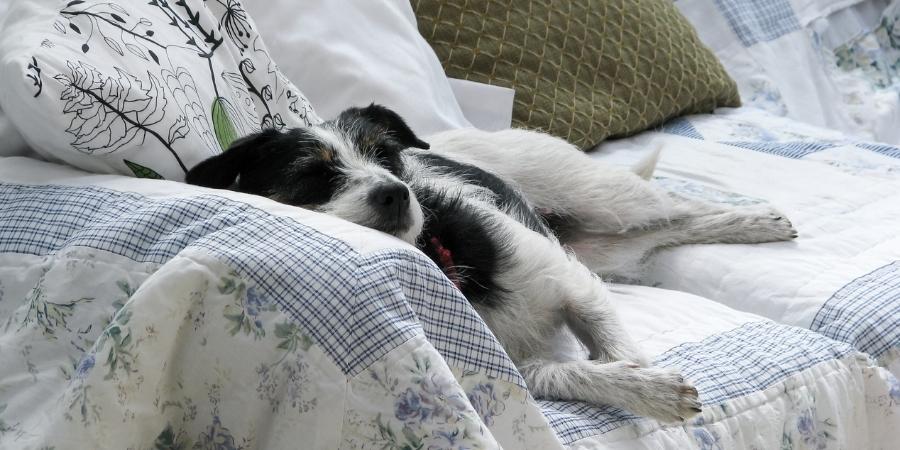
If your furry friend likes to join you in getting comfortable on the sofa, a heavy-duty throw is a good way to limit the number of pet hairs that transfer onto it. Leather couches are prone to nail marks and scratches from our pet’s paws, so a large throw will offer an extra layer of protection against any damage. Remember, a build-up of pet hair can also lead to a bad odour forming over time, so use a lint roller and wash the throw regularly to keep your home smelling its best.
Damage to lawns and gardens
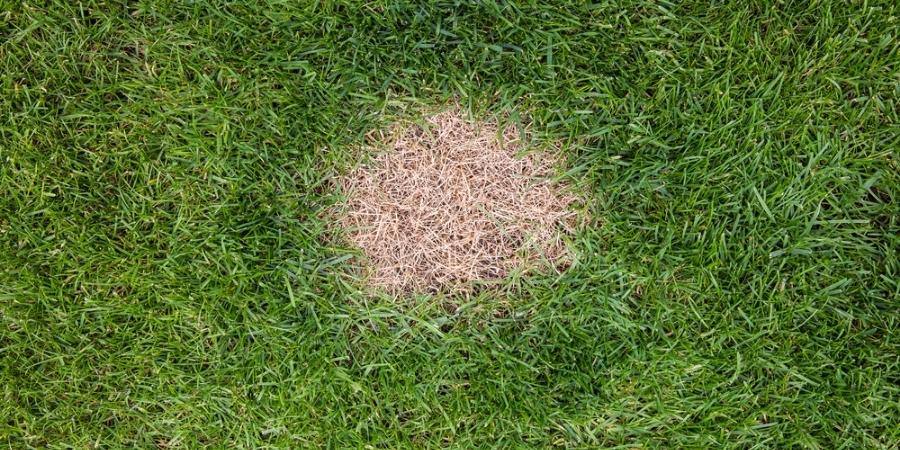
Have you ever wondered why a patch of grass turns brown a few days after your dog has peed there? It’s because dog urine contains a high level of nitrogen, which can over fertilise and burn the grass, resulting in discoloured spots.
To completely avoid any damage to your lawn, you’d need to restrict access and train your four-legged friend to do their business elsewhere in the garden - such as in a gravelled area. However, this isn’t always possible (or practical!), so try to minimise the damage instead.
To stop the grass from soaking up too much nitrogen, keep a watering can or a hosepipe nearby so you can rinse the spot where your dog has urinated immediately after they’ve finished. Doing this will reduce the nitrogen concentration and help limit the long-term damaging effects on the grass. Encouraging your dog to drink more water can also help dilute their urine whilst ensuring they stay fully hydrated; pet water fountains are great for increasing water intake, as many cats and dogs prefer running water. You can also add water to your pet’s food.
Read more: Vet Q&A: How can I stop dog pee from killing grass?
Moving home?
Read our top tips to help make the move less stressful for your pets.
